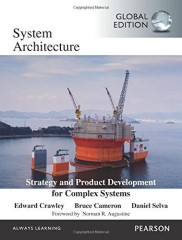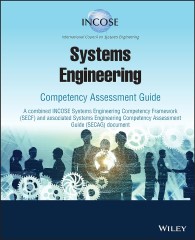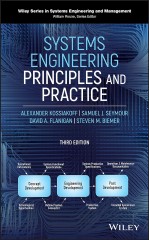Systems Integration is a multi-disciplinary practice that employs a methodical, end-to-end approach to address system complexities. It requires the collaborative assembly and commissioning of system elements, effectively managing interfaces at the system-level, and carrying out meticulous integration. The management of resultant outputs makes it an especial, enduring field in Engineering. This key capability helps resolve issues that can arise from combining different system components to create an operational whole.
Table of Contents
Key Takeaways
- Systems Integration combines multiple subsystems into a single functional system
- Essential phases include preparation, implementation, interface management, and results monitoring
- Critical for modern business operations and digital transformation
- Requires both technical expertise and project management skills
- Growing demand in industries like railways, healthcare, and manufacturing
What is Systems Integration?
Systems Integration is the process of unifying different subsystems or components into one cohesive system that functions as one. This comprehensive process ensures that all individual parts work together seamlessly, maximizing efficiency and productivity while minimizing operational disruptions.
Business Benefits of Systems Integration
- Increased operational efficiency
- Reduced maintenance costs
- Improved data accuracy
- Enhanced system performance
- Better scalability options
Systems Integration Implementation Guide
Successfully implementing systems integration requires a structured and methodical approach. The process can be complex, involving multiple stakeholders, technical challenges, and organizational changes. To help organizations navigate this journey effectively, we’ve created a comprehensive implementation framework that breaks down the process into five distinct phases.
Each phase builds upon the previous one, creating a logical progression from initial planning through to final optimization. This framework has been developed based on industry best practices and real-world implementations across various sectors, including manufacturing, healthcare, finance, and technology.
| Phase | Key Activities & Deliverables | Best Practices |
|---|---|---|
| 1. Preparation & Strategy Development | • Requirements gathering and documentation • Stakeholder analysis and engagement plan • Risk assessment and mitigation strategy • Resource allocation plan • Project timeline and milestones • Budget breakdown • Integration strategy document• Approved project charter | • Start with a thorough stakeholder analysis • Document all assumptions and constraints • Create detailed contingency plans • Set realistic and achievable timelines • Establish clear communication channels • Get early buy-in from all stakeholders • Include buffer time for unexpected issues • Define clear success criteria |
| 2. System Element Implementation | • Component configuration and setup • Module development and testing • Unit testing results • Technical documentation • Quality assurance reports • Implementation logs • Security compliance checks • Development environment setup | • Follow established coding standards • Implement comprehensive version control • Document all configurations and changes • Build in security from the start • Conduct regular code reviews • Test each component individually • Maintain detailed implementation logs • Create clear technical documentation |
| 3. Interface Management | • Interface design specifications • Communication protocol definitions • Data mapping documentation • Connection testing results • Performance baseline measurements • Interface control documents • Integration maps and diagrams • API documentation | • Standardize all interface protocols • Implement robust error handling • Document all interface specifications • Test interfaces thoroughly • Monitor interface performance • Create clear data mapping rules • Establish fallback procedures • Maintain interface compatibility logs |
| 4. Integration Execution | • Component assembly plan • System integration testing results • Performance testing data • Security implementation verification • User acceptance testing results • System documentation • Training materials • Deployment checklist | • Use a phased integration approach • Perform continuous testing • Maintain regular backups • Monitor system performance • Conduct thorough security checks • Document all integration steps • Train users before deployment • Have rollback procedures ready |
| 5. Results Management & Optimization | • Performance analysis reports • System optimization plan • Issue resolution documentation • Updated system documentation • Maintenance schedule • Training completion records • User feedback analysis • Final system handover documents | • Monitor system performance regularly • Address issues proactively • Keep documentation current • Schedule regular maintenance • Collect and act on user feedback • Plan for future upgrades • Maintain knowledge transfer • Create sustainable support processes |
Integration vs Interface Management: Key Differences
In the complex world of systems engineering, two critical disciplines often get confused: integration management and interface management. While closely related, these disciplines serve distinct purposes and require different approaches, skills, and methodologies.
Integration Management
Integration management focuses on the big picture – it’s the orchestration of all system components working together as a unified whole. Think of it as conducting an orchestra, where the conductor ensures all instruments play in harmony to create a complete musical piece. In systems engineering, integration managers ensure all parts of the system work together seamlessly to deliver the intended functionality.
Interface Management
Interface management, on the other hand, is more specialized. It focuses on the specific points where different components meet and interact – like ensuring the violin section can properly hear and sync with the percussion section in our orchestra analogy. Interface managers concentrate on defining, controlling, and maintaining these connection points between system components.
Why Understanding the Difference Matters
The distinction between these disciplines is crucial because:
- It affects project planning and resource allocation
- It influences team structure and responsibilities
- It impacts risk management strategies
- It determines success metrics and evaluation methods
- It shapes the overall project approach and methodology
Let’s examine the key differences in detail:
| Aspect | Integration Management | Interface Management |
|---|---|---|
| Primary Focus | Overall system functionality and cohesion | Connection points between components |
| Scope | End-to-end system implementation | Specific interaction points |
| Timing | Throughout entire project lifecycle | Primarily during design and implementation |
| Key Deliverables | Integrated system and documentation | Interface control documents and specifications |
| Success Metrics | System performance and functionality | Interface compatibility and efficiency |
While integration and interface management are distinct disciplines, they are deeply interconnected and crucial for successful systems engineering projects. Understanding their differences and relationships helps organizations:
- Better allocate resources
- Improve project planning
- Enhance risk management
- Achieve better outcomes
- Maintain system efficiency
Organizations should treat both as equally important aspects of systems engineering, ensuring proper coordination and alignment between the two disciplines.
Preparing for Systems Integration
The initial phase in Systems Integration is sound preparation. It’s during this phase that the integration strategy is devised and solid plans are laid out. The preparation activities involve understanding the system requirements, defining the integrating sequences, identifying potential risks, and determining how the system parts will interact. The preparation phase is crucial because it lays the groundwork for the subsequent integration process.
Performing System Element Implementation
This stage involves the practical application of the planned method outlined in the preparation stage. System element implementation requires the expertise of a systems engineer to assemble or modify the system parts to fit the operational requirements of the overall system. Tasks at this phase often involve configuring the system elements, testing their performance, and troubleshooting any glitches that may arise. At the end of this stage, the assembled system parts are ready for combination.
Managing System-level Interfaces
A pivotal part of Systems Integration is the management of system-level interfaces, which are essentially the points of interactions between different system components. These interfaces, whether they be hardware, software, or conceptual in nature, must be effectively managed to ensure the harmonious operation of the diverse parts of a system. An integral part of managing system-level interfaces involves setting protocols for the functioning of different components together, documenting interfaces, and troubleshooting inconsistencies.
Carrying Out System Integration
Once all system components have been prepared and vetted, and the essential interfaces defined, the integration phase comes into play. In this phase, the isolated system elements are combined into a unified, operational whole. This necessitates a sequential approach, integrating components one by one and continuously testing, to ensure uninterrupted functionality. Any irregularities encountered during the integration have to be swiftly addressed by the systems engineer, who must be skilled in identifying and resolving issues promptly.
Recommended Further Reading Amazon BooksManaging Integration Results
After Integrating all system components, a systems engineer will assess and manage the results. This involves finalising system documentation, resolving any remaining inconsistencies, assessing system performance, implementing the required modifications, and ensuring system stability. The process may appear to wrap up with this stage; however, it is worth noting that system integration is an ongoing process, requiring regular maintenance and upgrades to ensure optimal operation.
Systems Integration is an essential process in the realm of system engineering. It provides a structured approach to amalgamate different components into a unified, functional system. Among the reasons to lucrative career opportunities in this domain, few stand out as notably as its dynamic nature and the satisfaction guarantee it brings upon working through the complexity to create seamless operations. It’s a fascinating field that constantly presents unique challenges and opportunities – enticing more individuals to join the realms of system engineering.

Case Study: UK Railways – The Digital Railway Programme
One of the most profound examples of Systems Integration in action is the ongoing Digital Railway Programme led by Network Rail in the UK. The aim of this ambitious project is to upgrade the UK railway system using digital technology to increase operational efficiency, enhance passenger safety, and boost capacity.
The challenges faced in implementing this integration were immense. One of the major challenges was the diversity of system elements that were to be integrated. The UK’s railway system, being one of the oldest in the world, utilised technology from varied periods of development. This meant that components were not just physically diverse but also ranged vastly in their age and design principles. Furthermore, the large geographical span of the network added complexity to the already challenging project.
However, through effective planning and implementation of systems integration principles, these challenges were overcome. Customised solutions were crafted for different segments of the railways, taking into account the unique aspects of each zone. The implementation of new components was carried out in a phased manner, ensuring minimal disruption to the existing system.
A critical part of this project was managing the system-level interfaces. New standards and protocols were set to enable the smooth interaction of digital and analogue components. This involved rigorous testing and modification cycles to ensure compatibility and operational efficiency.
The integration process continues with everyday challenges being resolved efficiently by the team of dedicated systems engineers. The results of the programme are already becoming apparent, with improvements in operational reliability and efficiency, and increased network capacity.
Refer to the UK Digital System Programme here.
Recommended Future Learn Short CoursesFrequently Asked Questions
1. What does a systems integrator do?
A systems integrator plays a crucial role in system engineering by bringing together discrete system components, managing system-level interfaces, and ensuring that all these parts work harmoniously. This involves developing a comprehensive integration strategy, implementing system components, interfacing effectively, integrating the components, and subsequently managing the integrated system for optimal operation.
2. Why is Systems Integration important?
Systems Integration is paramount in ensuring that diverse system components work together seamlessly. By defining clear interfaces and protocols, it enhances collaboration between diverse functions, improving overall system efficiency and functionality. Additionally, it offers a systematic, structured approach that minimises inconsistencies and fosters cohesion among the system components.
3. What skills are necessary for a successful systems integrator?
A successful systems integrator possesses a suite of technical and soft skills. Clear understanding of relevant system components, technical acumen, and robust problem-solving abilities form the bedrock of a systems integrator’s expertise. Soft skills such as effective communication, process management and flexibility are also invaluable, particularly when navigating the collaborative and dynamic nature of the role.
4. What are the challenges in Systems Integration?
Systems Integration often involves multiple complex aspects that can pose challenges such as, compatibility issues between system components, dealing with legacy systems, managing risks and changes, and maintenance of the system. Moreover, complexity and scale could lead to integrational difficulties. Consequently, an integrator requires a continual process of learning, improvement, and hands-on experience to overcome these challenges.
5. How will Systems Integration evolve in the future?
The field of Systems Integration is constantly evolving, driven by rapid technological advancements. As more complex and advanced systems come into play, the need for competent system integrators will rise. Expect to see an increase in automated integration processes, application of machine learning and artificial intelligence in integration, and a closer interaction between systems integrators and other stakeholders to drive efficiency. As such, this field offers an exciting and dynamic career prospect for aspiring system engineers.
























